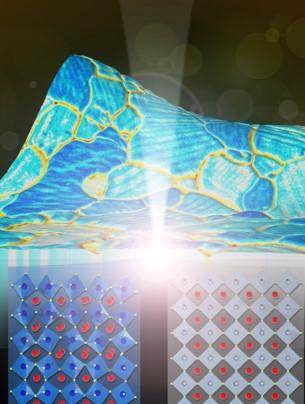
It is found that, due to photocarrier-lattice interaction, the ferroelastic twin domains with chemical segregation in CH3NH3PbI3 interact with light, diminishing the strain variation between neighboring domains.
Scientific Achievement
Experimental and theoretical results show how light interacts with ferroic domains in a high-performance photovoltaic material.
Significance and Impact
Work provides enhanced understanding of light-ferroic interactions for a class of hybrid organic-inorganic perovskites to help guide the development of functional optoelectronic devices.



